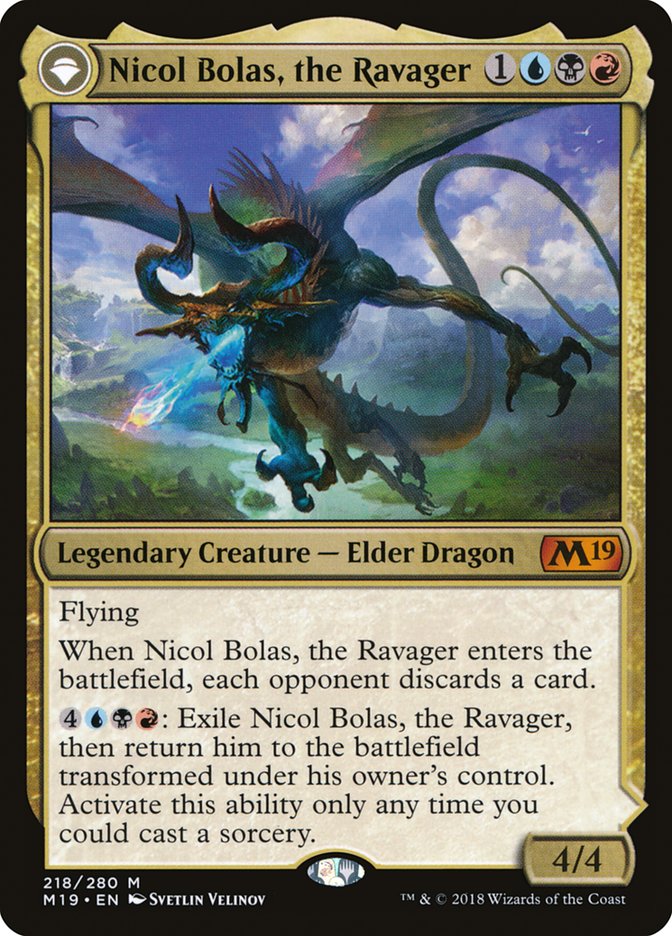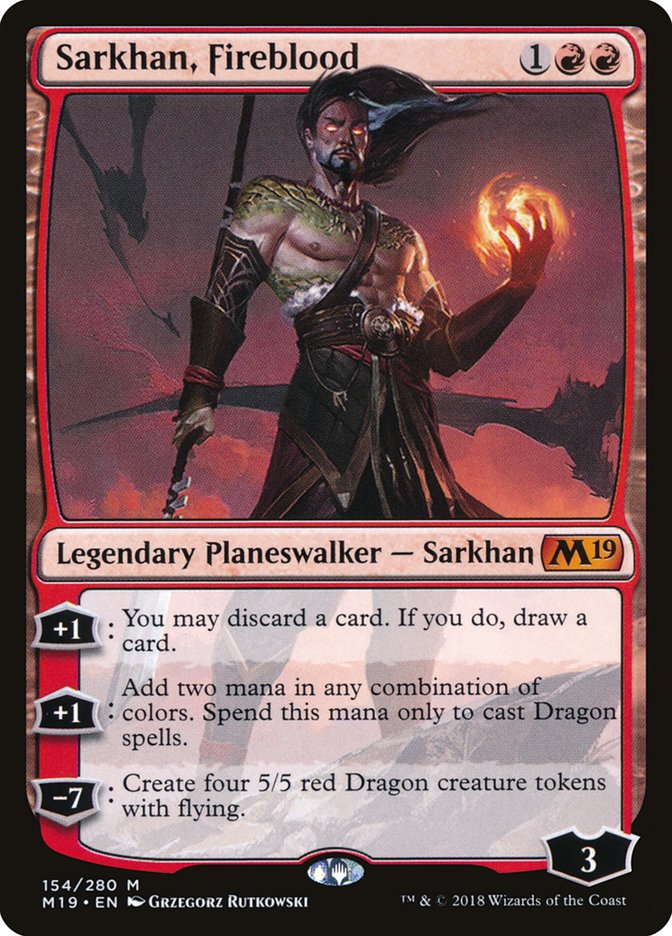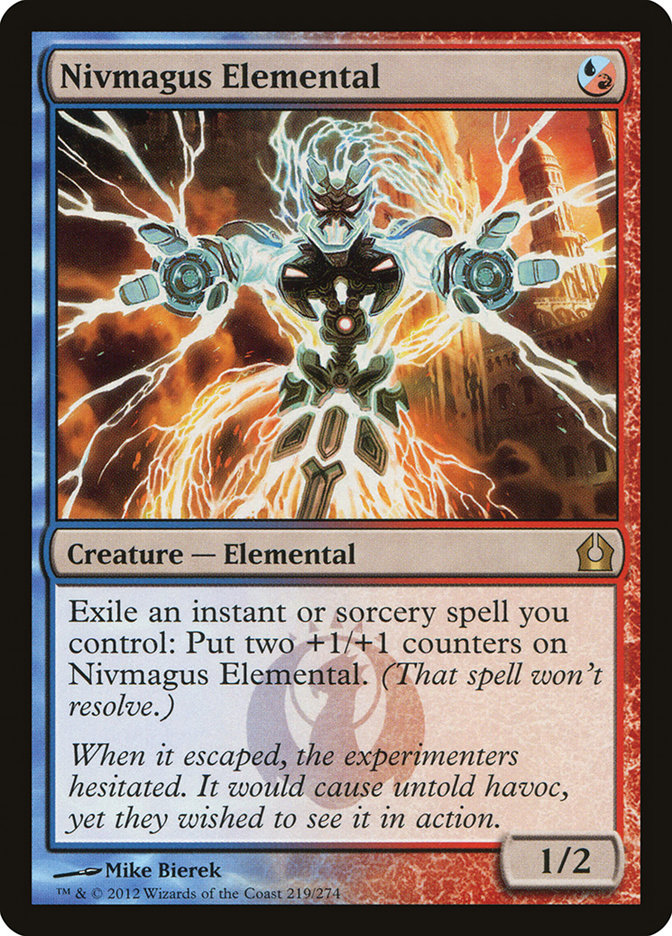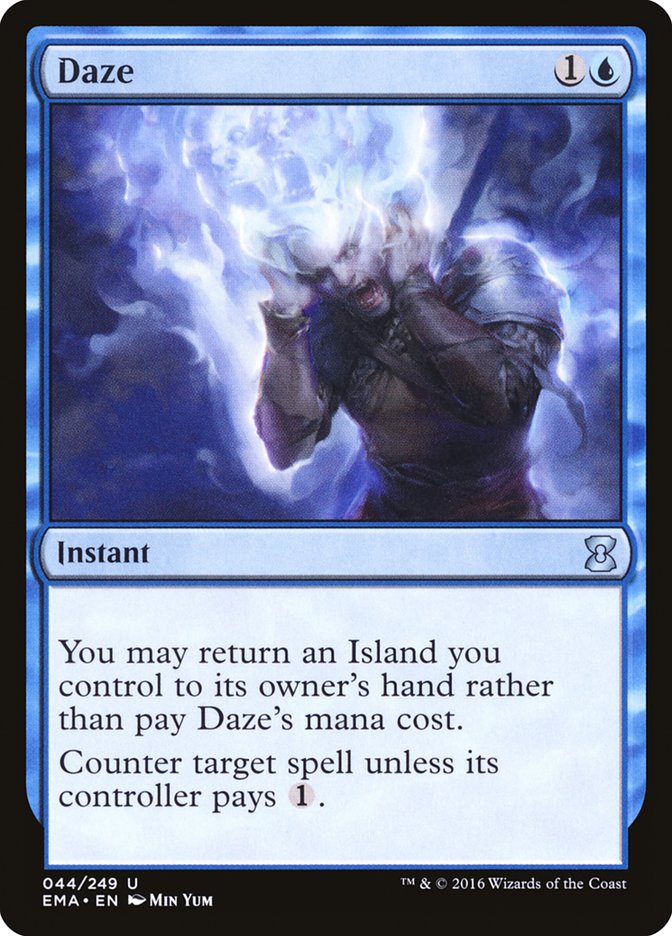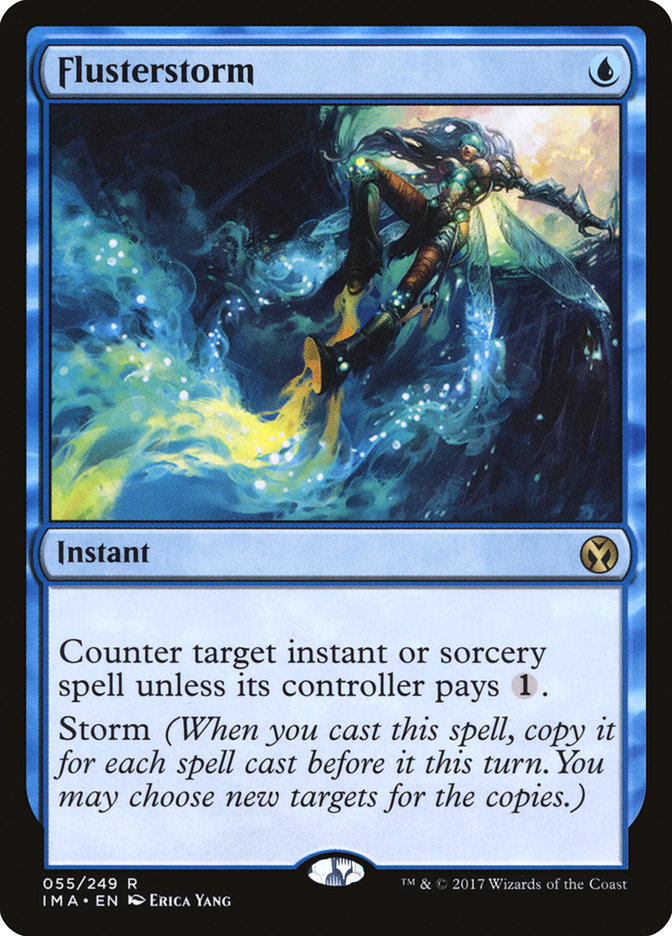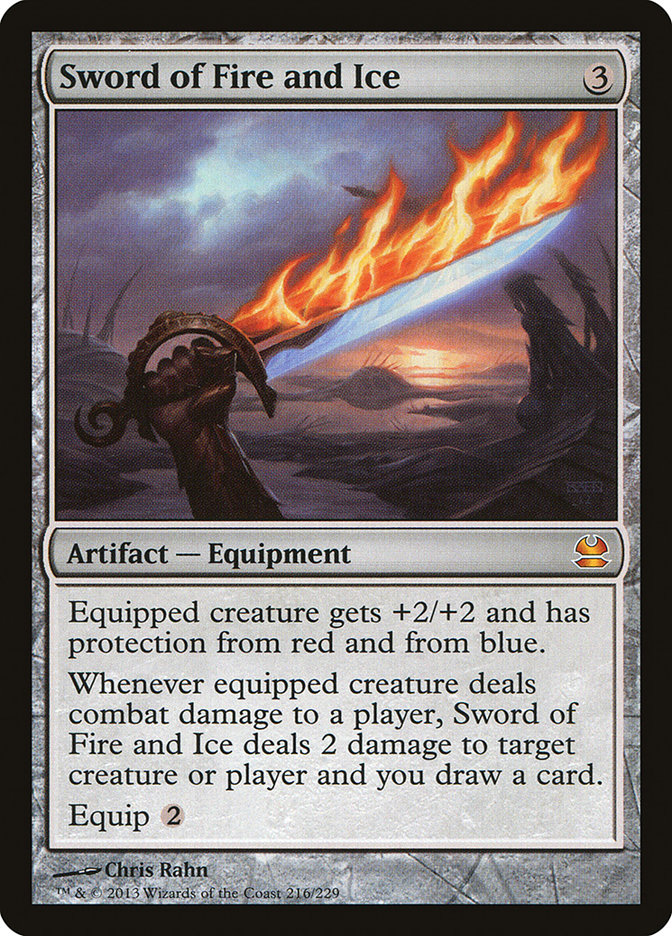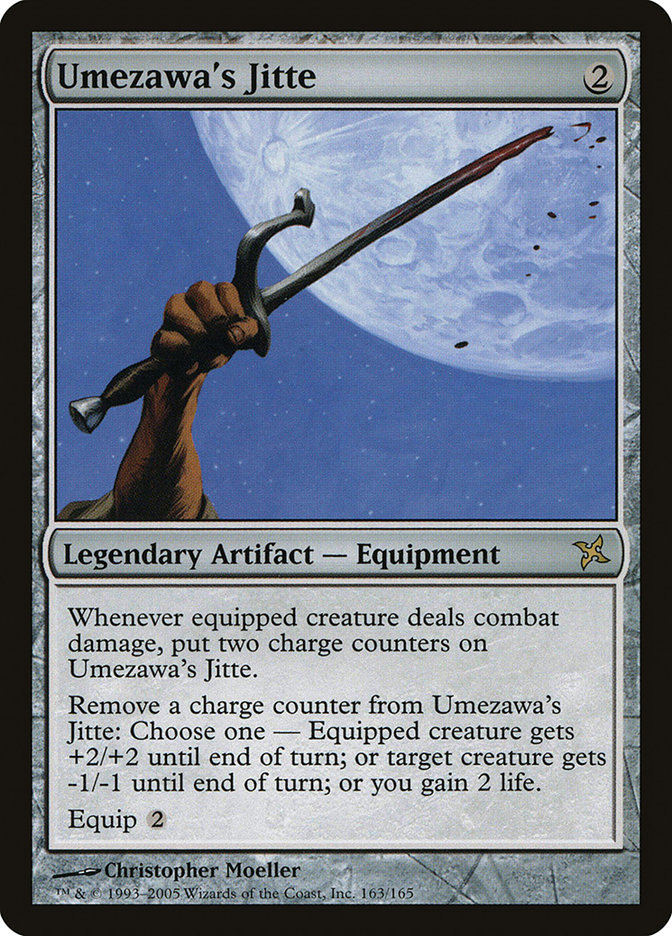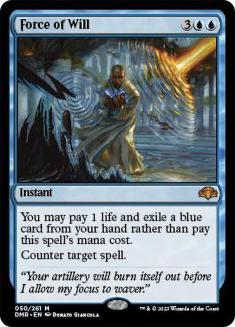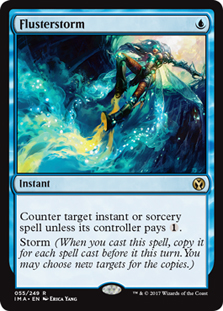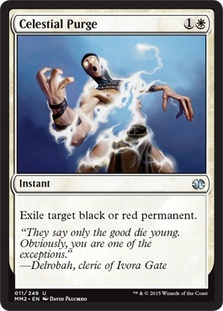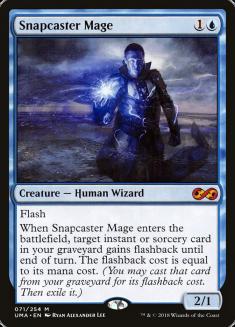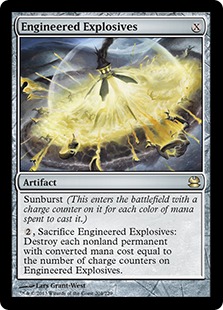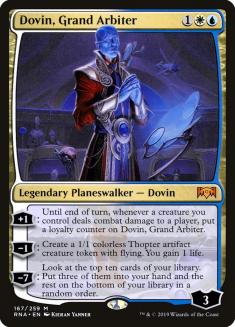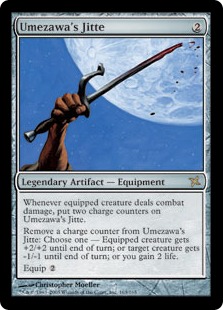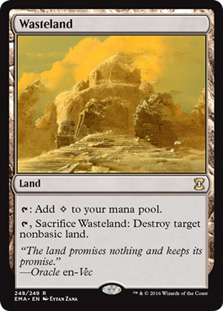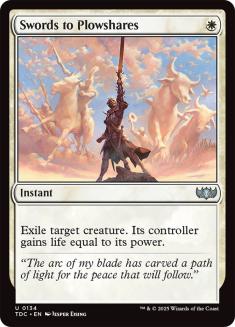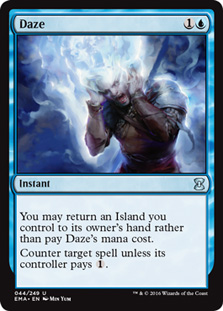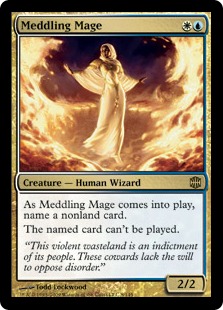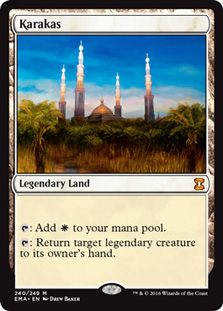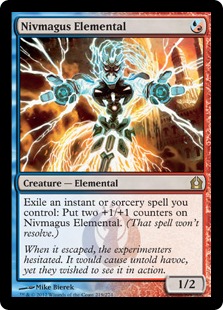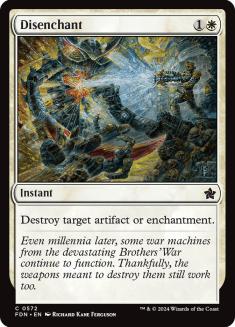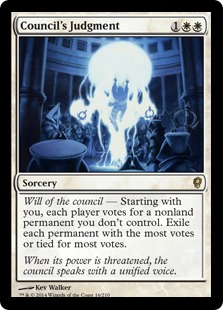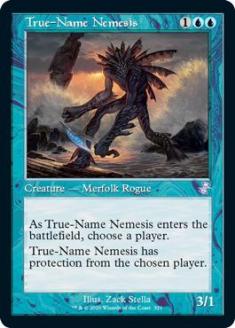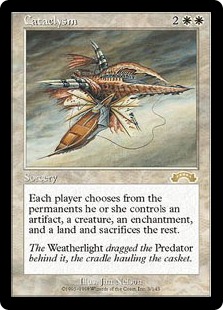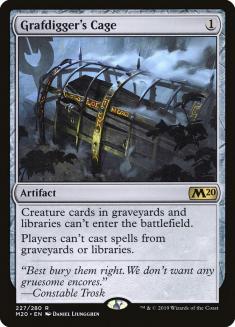Do you have cards that you just can’t quit?
You know the ones I’m talking about. The cards that, despite all evidence to the contrary, you continue to believe are destined to one day dominate their respective formats. In Standard, I’ve felt this way about Nicol Bolas, the Ravager and Sarkhan, Fireblood since their release. It just seems like those cards are too powerful on their face to not eventually become format linchpins. Yet each iteration of Standard since their printing has played out with only the faintest presence of these cards in competitive decks.
Last Standard I was never able to pull myself away from Hour of Promise. Prior to that I had an unhealthy addiction to building around The Great Aurora. Thankfully, time rolled on, and eventually Standard rotation saved me from myself and got me back into healthy relationships with “good” decks.
Unfortunately, there are a couple of formats that just don’t have the good sense to rotate. In those formats, my problematic obsessions ebb and flow, but deep down inside I know they’re always destined to return. And there’s an innocuous little one-drop I now have an almost seven-year long dalliance with.
I basically hopped on board the Nivmagus Elemental hype train the second it was previewed and unfortunately dragged some friends along with me.
Creatures (10)
Lands (17)
Spells (33)

If you aren’t in on the joke, it goes something like this. Nivmagus Elemental doesn’t only eat “real” instants and sorceries – it’s just as happy to gobble up storm copies. This meant that Turn 1 Nivmagus Elemental, Turn 2 Mutagentic Growth, Tainted Strike, Ground Rift left you with a 10/11 Infect creature ready to attack for lethal. At the time of Pro Tour Return to Ravnica, Modern combo decks were very content to look for their wins on Turn 4, and key removal like Fatal Push had not yet been printed. Nivmagus Elemental plus a one-mana storm card was the most broken thing in the entire format.
The problem? It was near impossible to beat Jund decks super-powered by a pre-banning Deathrite Shaman. Any guesses what deck comprised about 30% of the field at Pro Tour Return to Ravnica?
The pervasiveness of Jund at this tournament (and eventually the format at large) caused Nivmagus Combo to crash and burn spectacularly. Despite this, over the last seven years I have always kept the combo close at hand. If the format started to break in such a way that it seemed vulnerable to Nivmagus Elemental, you could bet I was hopping into the queues with it. Each time, my efforts revealed a deck that felt like it was on the cusp of greatness but had some fatal flaw.
It has been a year or so since my last attempts to make Nivmagus Elemental work in Modern. It seemed that maybe I had turned the corner, and finally accepted that the card just wasn’t all that impressive. And then I found myself with some rare free time on a weekend, that just so happened to line up with a local Legacy tournament.
I love Legacy. In a lot of ways, Legacy is the reason I started playing competitive Magic after many years away from the game. But while I do my best to stay abreast of the format, I’d be lying if I said I pay as much attention to it as Standard or Modern. So when I did my customary pre-tournament metagame review, the last card I expected to see was Nivmagus Elemental.
Creatures (14)
Lands (19)
Spells (27)

The earliest instance of the deck popping up I can find is this version from Mw_94gA at the end of 2018. I don’t know if they deserve credit as the creator of the archetype, but I want to make clear that what I offer here is very much inspired by the work of others. I took an archetype that caught my eye, made some changes that I believed could optimize the deck, and rode it to an undefeated Swiss record against tough competition without ever having played a game with the list. I fell in the Top 4 to a version of Miracles containing Stoneforge Mystic and Squadron Hawk that felt like the absolute nightmare matchup, but the deck impressed all day long. Here’s my 75.
Creatures (14)
Lands (19)
Spells (27)

One of the things that has always bothered me about Azorius Delver decks in Legacy is their inability to commit to a gameplan. They seem to take a random smattering of strong blue and white cards and hope raw card quality can carry the day. Why was Jace, the Mind Sculptor seeing play alongside Wasteland and Daze? A one-of Supreme Verdict in the maindeck? Hoping that a few Force of Wills and an anemic clock could keep up with combo? What were these lists thinking? As awful as Stifle often is, at least builds playing the card had a clear and defined gameplan.
Nivmagus Delver commits to the early game hard in Game 1s, with a couple of additional one-drops and a greater focus on the cheapest of interaction. It does so with limited vulnerability to the mana denial effects present in the format and retains reasonable win conditions in the face of something like Chalice of the Void. I’ve heard many Legacy pundits insist that non-Brainstorm decks are finally beginning to reach true viability. Nivmagus Delver has the capacity to push back against many of the strategies non-blue mages are using to close the gap.
When a Nivmagus Elemental is on the battlefield, your opponent is forced to show it due respect, or they can be killed out of nowhere. It isn’t all that hard to put together buffs of +10/+10 for a relatively small mana investment. Cast a Brainstorm, hold priority and Daze it, and cast a Flusterstorm. +10/10 for two mana and three cards is far from the worst deal. Or you can settle for +8/+8 and let the Brainstorm resolve. The world is your oyster.
To capitalize on this aggressive element, you must have strong knowledge of the format. If you don’t understand how your opponents can punish you for moving all-in, you won’t be able to leverage the Nivmagus Elemental aspect of this deck. A cast Flusterstorm with Nivmagus Elemental on the battlefield leaves your opponent with some difficult decisions. Do they want to spend mana to deny you additional copies of Flusterstorm to eat with Nivmagus Elemental? Do they even know they can? Meanwhile, those same Flusterstorms are at the ready to punish the copious combo decks of the format. The absence of Deathrite Shaman has pushed a lot of metagame share into the hands of Reanimator and Storm-based strategies, and you’ll almost always be able to find a use for your Flusterstorms against opposing blue decks.
I showed restraint and only played two copies of Nivmagus Elemental because I do think it’s important to acknowledge that it’s reliant on other cards to be functional. Legacy is a format with Hymn to Tourach and your deck is almost devoid of actual card advantage. If you’re playing a resource-light game, it’s very difficult for Nivmagus Elemental to be better than Delver of Secrets. The maindeck inclusion of Sword of Fire and Ice over Umezawa’s Jitte is a nod to your desire for more resources, though it’s easy to craft theoretical metagames that would prefer maindeck Jitte.
Speaking of our Equipment package, Stoneforge Mystic finds itself thrilled to have yet another one-drop on lightning rod duty. I find myself grabbing more Batterskulls with these Stoneforge Mystics, as they’re surviving far more often. Having an additional cheap protection spell in Flusterstorm helps Stoneforge Mystic’s survival odds too. Once I have a Stoneforge Mystic package, I generally insist upon a minimum of three True-Name Nemesis, and I think playing the fourth over the fourth Flusterstorm, the Snapcaster Mage, or the Council’s Judgment is entirely reasonable. If I did play the fourth True-Name Nemesis, it would be because I was expecting a fairer metagame, and that would necessitate a swap of Umezawa’s Jitte to the maindeck as well.
My sideboard was designed to make sure I always had enough cards to bring in in spots where I wanted to cut four Flusterstorms and the two Nivmagus Elementals. As such, I played some more versatile and less powerful options. It’s possible that, with more time and refinement, cards like Meddling Mage and Cataclysm could be replaced with better cardboard.
Here’s a rough guide to how I approach sideboarding in key matchups, but I strongly encourage you to remain flexible, as Legacy has a lot of one-shot knockouts that you simply must be ready to adapt to.
VS Grixis Delver
Out:
In:
In sideboard games, we’re looking to upgrade the average impact of our individual cards. The only edge we really have on Grixis builds is our ability to leverage a mana advantage generated by fetching basics. If we enter the late-game, their card quality will mostly be higher, and discard is better than reactive disruption. Dovin, Grand Arbiter is my effort to insert a persistent resource generator like Bitterblossom into the deck, and thus far it has done the job well enough. I do question whether it’s realistic to play it in matchups where Pyroblast and March Casualties are making an appearance, but those cards are already taxed hard. This isn’t a great matchup, but it’s still a relatively small percentage of the metagame, even if it is the most played deck.
VS Miracles
Out:
In:
Threat density is the name of the game here. You simply need to cast early threats and protect them while pushing your clock as hard as you can. Even with vulnerabilities, it’s often better to be a bit more aggressive with your Nivmagus Elementals in this matchup.
VS Mono-Red Prison
Out:
In:
Get basics. Swords to Plowshares their threats. Now their deck is bad. GG.
VS Storm
Out:
In:
In general, I like having access to Snapcaster Mage more than having Grafdigger’s Cage, but this can change based on an opponent’s build. I’m willing to live with the Rest in Peace / Snapcaster Mage non-bo, since Rest in Peace is a more powerful effect than Grafdigger’s Cage, and Snapcaster Mage does retain some value as a flash threat. As you might expect, Ad Nauseam Tendrils is not thrilled to play against the Delver deck with four maindeck Flusterstorms.
VS Lands
Out:
In:
Sideboard games of this matchup are exactly why I love Legacy, as every single micro-decision can win or cost you the game. You lack any kind of haymaker (short of maybe Cataclysm), so you must carefully manage your opponent’s capabilities to make a 20/20 while finding a way to get a sticky threat on the battlefield. Be aware of their diverse sideboard options and be thankful that Disenchant and Swords to Plowshares should cover most of them.
VS Reanimator
Out:
In:
We get to interact earlier than most Delver decks and have better white sideboard options. Reanimator can always steal a match, but I like our setup.
***
I’ll be the first to admit than Nivmagus Delver is a bit of a misnomer. While the deck appreciates a new angle, this deck is much closer to its fair brethren than the name implies. Regardless, I’m extremely happy to see Nivmagus Elemental get its due in another format. If you’re going to take this deck to SCG Syracuse, you’ll have a powerful option that many players will simply not be prepared for. I’ll have my fingers crossed that Jund will be a much smaller portion of the metagame this go around.


